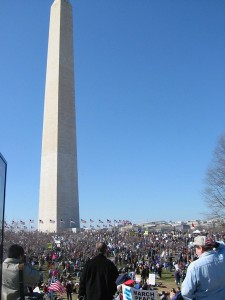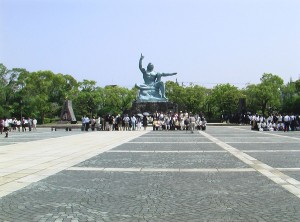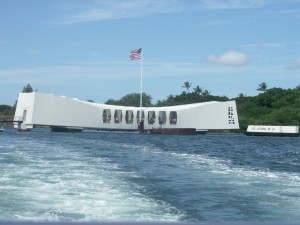In each of the three countries specific memorials and museums serve as cultural icons, embodiments of vital elements of the national narrative.
In the U.S. Washington DC  is central to the national story in the US, and students visit the Capitol to hear about the essentials of democracy, though few of them are directed to the Civil War Memorial and the statue of General Grant immediately in front. Rather they visit the Washington Monument, honoring the first President and Independence, and Arlington Cemetery to see the John F. Kennedy’s grave.
is central to the national story in the US, and students visit the Capitol to hear about the essentials of democracy, though few of them are directed to the Civil War Memorial and the statue of General Grant immediately in front. Rather they visit the Washington Monument, honoring the first President and Independence, and Arlington Cemetery to see the John F. Kennedy’s grave.
In JAPAN there cannot be many school children who have not visited either Hiroshima or Nagasaki. The A-Bomb Dome is the first sight they see in the Hiroshima memorial. It has been kept standing as a testimony to the destruction of the War. In Nagasaki the vast statue of the man dominates, testimony to the town’s commitment to peace.
or Nagasaki. The A-Bomb Dome is the first sight they see in the Hiroshima memorial. It has been kept standing as a testimony to the destruction of the War. In Nagasaki the vast statue of the man dominates, testimony to the town’s commitment to peace.
Images from KOREA are symbols because the icons in Korea represent ideals more than places the students might visit. The script with a hand missing two fingers was made by Ahn Joon Geung who was imprisoned for assassinating Hiro Bumi Ito, the first Japanese Governor General of Korea. To this day heroic protest is symbolized by writing in blood made by cutting a finger. The script with a hand missing two fingers was made by Ahn Joon Geung who was imprisoned for assassinating Hiro Bumi Ito, the first Japanese Governor General of Korea. To this day heroic protest is symbolized by writing in blood made by cutting a finger.
The script with a hand missing two fingers was made by Ahn Joon Geung who was imprisoned for assassinating Hiro Bumi Ito, the first Japanese Governor General of Korea. To this day heroic protest is symbolized by writing in blood made by cutting a finger.
And conflict with Japan focuses most often on the colonization era, or on control of disputed islands known in Korea as Dokdo and in Japan as Takeshima. The DMZ is also an iconic site, though only foreign tourists, not Korean nationals are allowed to enter the key frontier site. The War Memorial Museum allows them to visit the DMZ cafe instead. World War II, the center of so much memorial activity in Japan and the US is barely noted at all in Korean history. The display at the War Memorial Museum is on the back wall of a small cafe, not in the museum proper.
and in Japan as Takeshima. The DMZ is also an iconic site, though only foreign tourists, not Korean nationals are allowed to enter the key frontier site. The War Memorial Museum allows them to visit the DMZ cafe instead. World War II, the center of so much memorial activity in Japan and the US is barely noted at all in Korean history. The display at the War Memorial Museum is on the back wall of a small cafe, not in the museum proper.


No Comments so far ↓
There are no comments yet...Kick things off by filling out the form below.